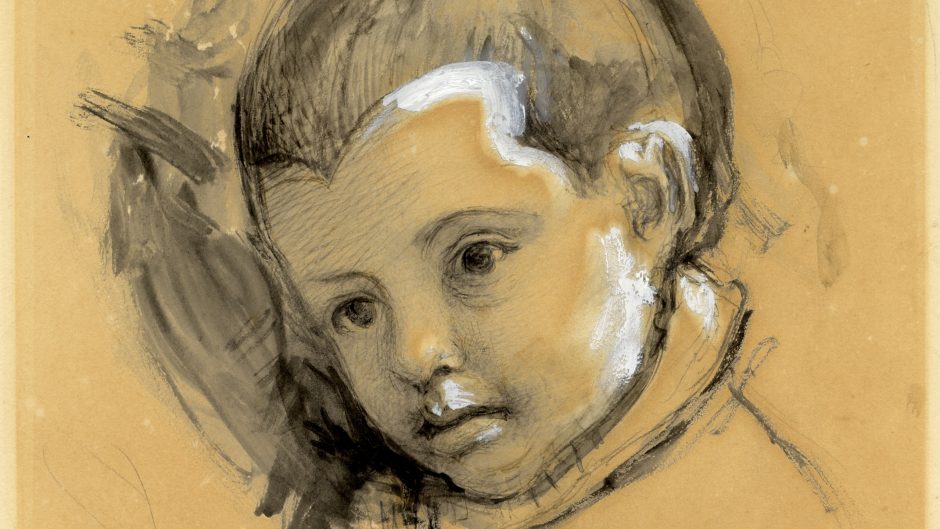Stephen Bann CBE FBA is Emeritus Professor of History of Art and Senior Research Fellow at Bristol University. He has analysed nineteenth-century French print culture in Parallel Lines (2001) and Distinguished Images (2013). His most recent book, Scenes and Traces of the English Civil War (2020), derives from lectures given as Slade Professor at Cambridge in 2017.
Timothy Chandler recently completed his doctoral dissertation, ‘Vestures of the Past: The Other Historicisms of Victorian Aesthetics’, at the University of Pennsylvania.
Kate Flint is Provost Professor of Art History and English at the University of Southern California and has published extensively on Victorian culture. She is working on a project that explores the nineteenth-century British and American fascination with close observation of the ordinary natural world, and considers how this relates to today’s environmental crises. Additionally, she is working on a history of English literary and visual culture during a period of dramatic change and cultural diversity, 1875–1915, and is bringing together and revisiting a number of earlier essays on materiality and sensory perception.
Kelly Freeman is a forensic anthropologist and historian of nineteenth-century British and French art and Gothic architecture. In the past she has worked on the authentication of Cornelius Varley’s portrait of J. M. W. Turner using 3D imaging of Turner’s death mask, and has published on John Ruskin and the architecture of the Oxford University Museum of Natural History. She is currently writing a book about the literal and metaphorical application of bone in art, architecture and engineering. She works for the Science Museum Group in London.
Polly Gould is an artist and writer. She has a PhD from the Bartlett School of Architecture, UCL. She teaches at the School of Architecture, Planning, and Landscape at Newcastle University and the Bartlett School of Architecture, and shows with Danielle Arnaud in London. In 2020 her recent monograph titled Antarctica, Art and Archive was published by Bloomsbury.
Lawrence Gasquet is Professor of British Literature and Aesthetics at Jean-Moulin — Lyon 3 University in France. Her research focuses on Victorian literature, visual perception, photography theory and art theory. She published Lewis Carroll et la persistance de l’image (Presses universitaires de Bordeaux, 2009), co-edited Lewis Carroll et les mythologies de l’enfance (Presses universitaires de Rennes, 2005), L’Art de plaire (Gérard Monfort, 2006), L’Eblouissement de la Peinture, Ruskin sur Turner (Presses universitaires de Pau, 2006). She has written articles on Lewis Carroll, John Ruskin, Julia Margaret Cameron, Damien Hirst, Marc Quinn, Susan Derges, Christopher Bucklow, Jorge Otero-Pailos, Garry Fabian Miller, Peter Greenaway and other artists.
Thomas Hughes is Associate Lecturer at The Courtauld Institute of Art in London, where he has taught on Victorian and modern French art. His work focuses on Victorian art and aesthetics, ecology, queer theory and temporality. He has published on Ruskin, drawing, and colour in British Art and the Environment (2021) and on subjectivity and language in Michael Baxandall and T. J. Clark in the Journal of Art Historiography (2020). He is currently writing a book on Ruskin, Walter Pater and the Aesthetic Movement.
Stephen Kite is an Emeritus Professor at the Welsh School of Architecture, Cardiff University. His research explores the history and theory of architecture, and its wider links to visual culture. His many publications include the monographs Shadow makers: A cultural history of shadows in architecture (2017), and Building Ruskin’s Italy: Watching architecture (2012). Currently his research examines the faces of British architecture (1840–2000).
Jeremy Melius is a historian of modern art and art writing. He has recently completed a book on the invention of Botticelli and is at work on another concerning the fraught relation between Ruskin and art history.
Ryan Roark is an American architectural designer and educator. She is the 2019–22 Ventulett NEXT Generation Teaching Fellow at the Georgia Tech School of Architecture, where her research focuses on the role of history and reuse in urban planning and design. She was a 2017 KPF Paul Katz Fellow in London, where she studied different typologies of design interventions into old buildings and the attitudes to history they represent.
Nicholas Robbins is a lecturer in the History of Art Department at University College London, where he teaches the history of art and visual culture in nineteenth-century Britain and North America. He is currently writing a book about climate, scientific representation, and artistic experiment in the Atlantic World.
Moran Sheleg is a writer and art historian. She received her PhD from UCL in 2017. Her work has appeared in publications including The Burlington Magazine, Oxford Art Journal, Journal of Contemporary Painting, Tate Research and Object.
Courtney Skipton Long is a historian of art and architecture with a focus on the long nineteenth century, art and science, prison reform, and the Gothic Revival. She is the former acting Assistant Curator of Prints and Drawings at the Yale Center for British Art and the current Associate Director for Membership Programs at the Yale University Art Gallery. She received her BA from Mount Holyoke College and her MA and PhD from the University of Pittsburgh.
Giulia Martina Weston holds a PhD from The Courtauld Institute of Art, where she has been Associate Lecturer since 2016. She is Consultant Lecturer at Sotheby’s Institute of Art and a member of several editorial boards. She has published on various aspects of Renaissance and Early Modern art and society. She authored the monograph Niccolò Tornioli (1606–1651): Art and patronage in Baroque Rome (2016), and coedited the volumes I Pittori del Dissenso (2014) and ‘A tale of two cities’: Rome and Siena in the Early Modern period (2020). Her forthcoming book focuses on Salvator Rosa’s afterlife and influence in Britain. She has lectured for the London Art History Society, Lincoln College, Oxford, and the Paul Mellon Centre for Studies in British Art.
